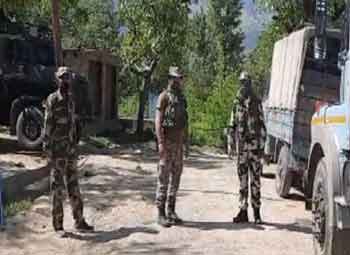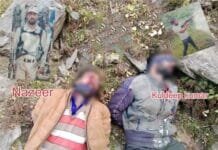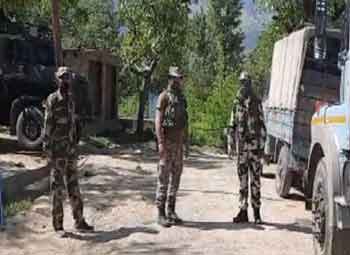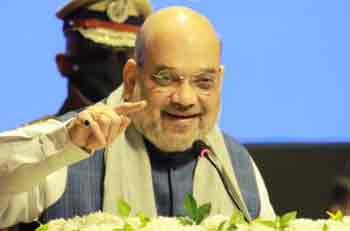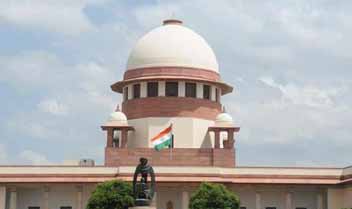INVC NEWS Karregutta, Chhattisgarh-Telangana Border — In a defining moment of India’s war against left-wing extremism, the tricolor was hoisted atop the once-dreaded Karregutta Hills, a towering Naxal stronghold perched over 5,000 meters above sea level. The act marked the culmination of Operation Karregutta, one of the largest and most meticulously executed counter-insurgency offensives in recent Indian history.
For decades, the region had remained under the shadow of armed Maoist insurgents. Today, it stands reclaimed — not just in territory, but in spirit.
A Fortress Falls: The Strategic Weight of Karregutta
Situated across 800 square kilometers on the porous border between Chhattisgarh’s Bijapur district and Telangana’s Mulugu district, Karregutta was long considered impenetrable — a topographical fortress that provided both natural defense and logistical cover to India’s most dangerous Naxal units.
Commanders from the People’s Liberation Guerrilla Army (PLGA), including Hidma, Deva, Damodar, Azad, and Sujata, are believed to have used this terrain as a safe haven. The hill was also the nerve center for Battalion No. 1, the elite combat unit responsible for several ambushes on Indian security forces across Bastar and beyond.
For years, efforts to penetrate this red bastion had failed. Until now.
Operation Karregutta: The Scale, The Strategy, The Stakes
Launched on April 21, the ongoing operation is being dubbed as one of the largest anti-Naxal mobilizations in Indian history. Over 24,000 security personnel from various units — CRPF, CoBRA commandos, District Reserve Guard (DRG), Bastar Fighters, Special Task Force (STF), and state police units — were deployed in a coordinated assault on the forested hills.
Choppers ferried troops and supplies, while drone surveillance units scanned dense canopy and valley routes, offering real-time situational awareness. The operation was tightly monitored by the Chief Minister of Chhattisgarh, Vishnu Deo Sai, and CRPF Director General G.P. Singh, underscoring the strategic and political significance of the mission.
High-Level Intelligence and the Hunt for Top Commanders
According to senior intelligence sources, security forces had received classified input on the presence of over 500 armed Naxals, including key commanders from the Telangana State Committee and the Dandakaranya Special Zonal Committee. The intelligence suggested that Hidma, arguably the most wanted Maoist leader in India, was coordinating movements from deep within Karregutta.
This intelligence transformed the mission from a containment exercise to a high-risk leadership decapitation strategy. Surveillance drones captured movement patterns. Satellite imagery highlighted fresh clearings and suspected arms depots. A web was woven — and then pulled tight.
Nine Days of Sustained Combat: Zeroing In
From the outset, the terrain threw up constant challenges. Narrow cliff trails, thick foliage, and extreme altitude required high-altitude warfare expertise and terrain adaptation drills. But the forces persisted. In nine days of sustained ground combat, the landscape was systematically cleared, one ridge at a time.
Commandos uncovered arms dumps, bunkers, booby-trapped trails, and camouflaged encampments. Improvised explosive devices (IEDs), AK-47s, rocket-propelled grenades, satellite phones, and stacks of Maoist literature were recovered.
And then came the moment of symbolic triumph — as the Indian national flag was planted atop Karregutta, in the very heart of what was once a Naxal citadel.
A Changing Political Landscape: BJP’s Crackdown Intensifies
Since returning to power in Chhattisgarh, the BJP government has significantly escalated its anti-Naxal operations. As per official data:
350 Naxals have been eliminated in armed encounters since January 2024.
144 were neutralized in 2025 alone.
Over 300 Naxals have surrendered so far this year.
In a major operation on March 29, 18 insurgents were killed in a single encounter.
In 2024, as many as 792 Naxals surrendered across the seven districts of the Bastar region. The state’s rehabilitation policy, which includes ₹50,000 in immediate financial aid and structured resettlement support, has seen increasing traction among lower and mid-level cadres.
Symbolism and Sovereignty: Why the Tricolor Matters
For India’s security establishment, the victory at Karregutta goes beyond just strategic mileage. The hoisting of the flag represents a psychological and ideological victory — a clear signal that the Indian state is no longer willing to concede even an inch to extremist ideologies.
In a region that had, for decades, been off-limits to civil administration and basic development, the raising of the tricolor rewrites the narrative — from fear to freedom, from red to saffron, white, and green.
Nationwide Implications: Countdown to the Endgame
Union Home Minister Amit Shah, in multiple public statements, has vowed to eradicate Naxalism from Indian soil by March 31, 2026. If Operation Karregutta is any indication, the state is on course.
The decimation of elite units, the neutralization of senior leadership, and the shrinking geographical footprint of Naxal activity are reshaping India’s internal security map. Fewer ambushes are being reported. Recruitment drives have slowed. And most tellingly, Naxal sympathizers are now increasingly choosing to surrender or flee.
With upcoming plans to deploy more permanent CRPF camps, infrastructure projects, and connectivity corridors across cleared areas, the government appears committed to turning military victories into lasting peace and governance.
What Lies Ahead: Vigilance, Development, and Reintegration
While the fall of Karregutta marks a landmark moment, experts warn against complacency. Naxal ideology, while dented, isn’t entirely dead. Pockets of resistance still exist, especially in south Sukma, Gadchiroli, and parts of Dantewada.
The government’s challenge now lies in translating military success into civilian confidence — by restoring schools, hospitals, roads, and livelihoods. True peace will come when villagers feel secure enough to vote, learn, farm, and live without fear of either gunpoint or extortion.
Still, for now, the hoisting of the flag at Karregutta sends a message heard loud and clear — the Red Corridor is shrinking, and India’s sovereignty is non-negotiable.




